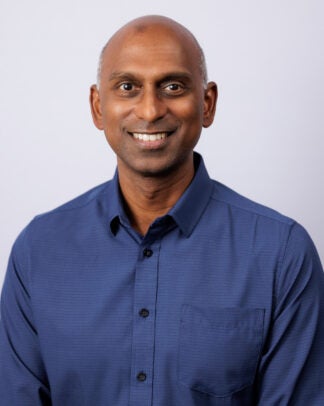How AI can mine patient records to pinpoint social impacts on health
Physicians today know that nonmedical factors can profoundly affect health. Unstable housing, poverty, neighborhood violence — these all can increase a person’s risk of chronic disease and hurt their ability to fight off major illnesses.
But these social factors are hard to pin down in traditional patient health records. In a new project, University of Illinois Cancer Center researchers and UIC computation experts will use artificial intelligence to extract those details from records and use them for more effective patient care.
The project, a partnership with technology company Pangaea, will create and deploy language models that comb through text from many sources and extract important data about social drivers of health. For example, the algorithm might pick up a social worker’s observation about violence in the patient’s family or infer, based on a patient’s address and income, transportation barriers to clinics or grocery stores.
That information could then be flagged for physicians to discuss with patients and better personalize care, said Dr. VK Gadi, deputy director of the cancer center and lead researcher on the project.
“If you don’t understand your patient absolutely well, you’re always going to make predictions on limited information,” Gadi said. “If you had a way to search the entirety of the medical record to pull pieces of information that paint a clearer picture of your patient, you will be able to make prognostications about that patient more accurately.”
The analysis also could help researchers investigate whether cumulative stress from long-term exposure to negative life events such as poverty or living in violent areas can lead to persistent or more severe illness. It may even uncover previously unrecognized social drivers of health by correlating information from thousands of patients with their health and treatment outcomes.
“What about the stuff that we’re not able to see or discern with our own eyes?” Gadi said. “What if we could continually assess for the true social drivers of health?”

To realize the promise of these AI tools while protecting patient privacy, Director of Oncology Informatics Sandeep Kataria worked with UIC’s Advanced Cyberinfrastructure for Education and Research to build new computer architecture. The system they built allows people to train and apply AI models but blocks access to patient records, except by approved UIC personnel.
“There were a lot of firsts in this project, and it gives us a blueprint for future projects involving AI and sensitive data,” Kataria said.
A pilot project used AI to look for 18 different social drivers of health in notes and summaries from 200 patient records. The researchers hope to expand that model soon to analyze 6,000 patient records consisting of almost a million files.
As the technology improves, it may inform new study designs that address both medical and social drivers of disease. For example, a breast cancer trial of a new drug may also address housing and food security if those factors show strong associations with more aggressive tumors or poor responses to treatment.
“Rather than look at it from the top down, can we be informed of the questions from the bottom up?” Gadi said. “That’s the big goal, this ability to continually monitor and assess the health of a community, and then from those first principles, design interventions that solve those problems.”
By learning from the diverse patient population served at UI Health, the project also will help ensure these artificial intelligence tools benefit all groups, reducing rather than exaggerating bias and disparities.
“This resource can help to address social inequities in health care,” said Himanshu Sharma, associate CIO for research technologies and innovation at UIC. “I think this moves the needle for research in the beginning and hopefully translates to clinical excellence down the line.”
Categories
Health Sciences Colleges, Research, UIC today
Topics
artificial intelligence, cancer, social determinants of health
